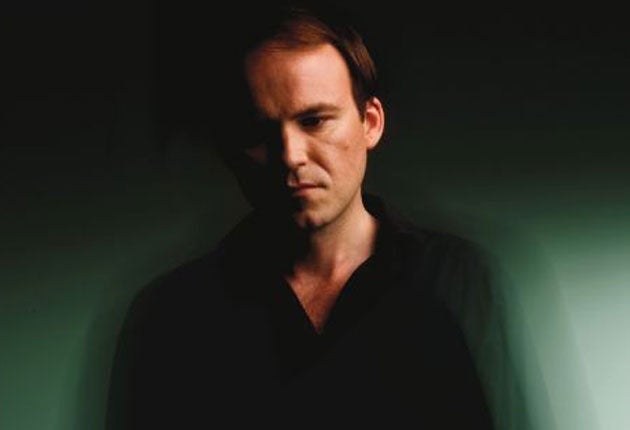Hamlet – the rivalry's the thing
Poet, prophet or loner? Contrasting takes on Shakespeare's great Dane remain one of the joys of the theatre, says Michael Coveney

Your support helps us to tell the story
My recent work focusing on Latino voters in Arizona has shown me how crucial independent journalism is in giving voice to underrepresented communities.
Your support is what allows us to tell these stories, bringing attention to the issues that are often overlooked. Without your contributions, these voices might not be heard.
Every dollar you give helps us continue to shine a light on these critical issues in the run up to the election and beyond

Eric Garcia
Washington Bureau Chief
Who's there?" is the first line and the first of many questions in Hamlet. Tonight in Sheffield, the answer is John Simm, the 40-year-old whippety actor exchanging Life on Mars for death in Elsinore. And in eight days time, at the National Theatre, the answer will be completely different: Rory Kinnear, the 32-year-old comic character actor of not too, too solid a flesh.
You could not imagine two more contrasting actors, nor less obvious casting. Simm has already defined a class and background conflict: he's flying a flag for the underprivileged, gritty, no-nonsense North while Kinnear represents the metropolitan, intellectual, possibly "softer" South.
Hamlet is a role of limitless complexity. Yet Simm and Kinnear might prove as starkly comparable as were Laurence Olivier and John Gielgud in 1937: Olivier played the role in a blond wig (he filmed this performance ten years later) and Gielgud, the actor most closely associated with Hamlet (he played it more than 500 times), was touring the world in his pomp.
Roughly speaking, and adopting some of Kenneth Tynan's analytic adjectives, Olivier was earthy, animal and extrovert, Gielgud airy, spiritual and introvert; peasant and poet, burgundy and claret, masculine and feminine. Both were indeed the glass of fashion and the mould of form, the observed of all observers. And indubitably prince-like.
Cutting the part of Fortinbras, as many modern productions do, solves the problem of that haunting final comment: "For he was likely, had he been put on, to have proved most royal." Leeds-born Simm, one imagines, will be as royal as a Burnley football supporter, Kinnear as fit for office as a jokey modern blue blood – Prince Andrew, say.
Hamlets in close proximity to each other have always offered rivalrous interpretations and illuminated critical argument. Oddly enough, in 1993, Sheffield was involved in another compare and contrast: Robert Glenister fair belted along at the Crucible, speaking the speech trippingly, no hint of a feminine side, while Alan Cumming – quick, mercurial, Scottish and very funny – toured the country in a floppy T-shirt and big boots.
The punkish, rebellious aspect of Hamlet has never been done more cheekily than by Cumming, who rates alongside my all-time favourite (and my first), David Warner in 1965, a student radical just before they were invented, consumed with loathing and self-disgust, mop-haired and charismatic, Mick Jagger with acne.
Even Warner, though, was simultaneously challenged by two great Russian Hamlets, Innokenti Smoktunovski, in Grigori Kozintsev's 1964 film and Vladimir Vysotsky in Yuri Lyubimov's "moving curtain" stage production; Vysotsky was an underground singer, alcoholic and national figure of resistance, with a voice that sounded as though he had lived on a diet of broken glass. He played the role for as many years as Gielgud and represents, with Warner, the ultimate poetic opposite to the grand tradition.
In late 1994, to mark the renaming of the Globe on Shaftesbury Avenue as the Gielgud, Peter Hall directed Stephen Dillane (covered in blood and stark naked at one point) as a very modern, dark and brooding Hamlet; three months later, Jonathan Kent directed a fiery Ralph Fiennes in a strikingly gestural production – "My fate cries out" came with a fine pose – in the glorious setting of Frank Matcham's Hackney Empire; we had the pain and the passion, and the polar opposites.
The latest contrast, equally marked, was between David Tennant's febrile, quicksilver Hamlet for the RSC in 2008 in a full-text, highly exciting production by Gregory Doran. It played in London at the same time as Jude Law's for Michael Grandage at the Wyndham's; Law was lonely, angry, husky, compelling. But he played the role, not himself, and didn't let the moody Dane possess him. Who's there? It depends who you are.
'Hamlet': Sheffield Crucible (0114 249 6000) to 23 October; National Theatre, London SE1 (020 7452 3000) previews from 30 September
Subscribe to Independent Premium to bookmark this article
Want to bookmark your favourite articles and stories to read or reference later? Start your Independent Premium subscription today.
Join our commenting forum
Join thought-provoking conversations, follow other Independent readers and see their replies
Comments